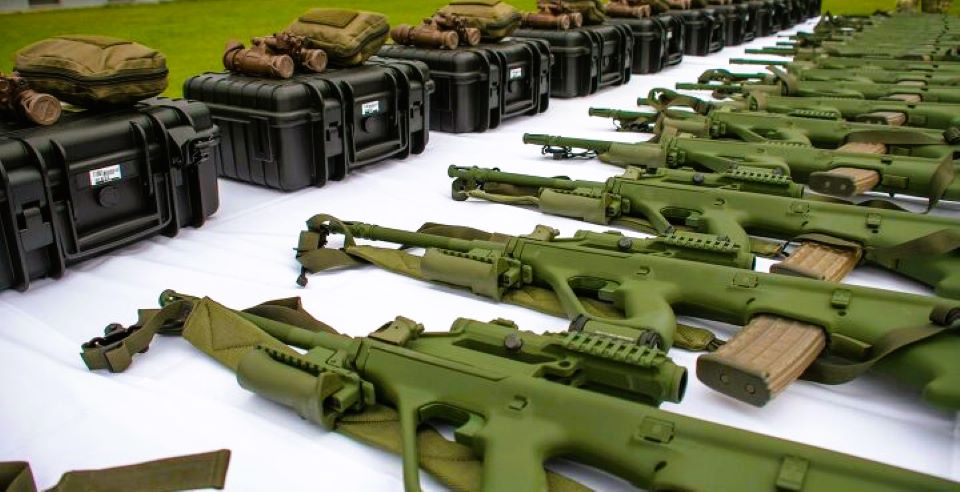Hanwha Aerospace recently presented its latest mobile missile system development the High-Performance Launch Rocket System (HPRS) at the Avalon Aerospace 2025 in Australia.
The HPRS appears to be derived from the currently fielded K-239 Chunmoo multiple launch rocket system which is in service with both the Republic of Korea military and the Polish Army. Both are based on a tactical truck chassis with state-of-the-art fire controls allowing highly accurate target engagement in a system able to rapidly move into position, fire and displace to enhance its survivability.
However, whereas Chunmoo’s primary purpose is addressing land targets, HPRS is intended as a land launched anti-ship missile system. The system mounts a single pod containing four CTM-MR ballistic missiles which have a range of fifty to one-hundred and sixty kilometres. The CTM-MR’s GPS/Inertial Guidance assures its nine-meter CEP accuracy. The CTM-MR missile Anti-Ship Ballistic Missile (ASBM) itself has been in development with a projected completion and production date of 2027. The CTM-MR will also be compatible with launch from the Chunmoo.
The HPRS weapon system utilizes a 6 X 6 truck chassis vice the Chunmoo’s 8 X 8 and is fit of with only a single missile pod. This results in a lighter overall system weight, thus, enhancing both its transportability, suitability for movement on less developed road networks, and compatibility with a many naval and landing platforms. The system retains the technology and firing capabilities of the Chunmoo and has common operating procedures, as well as maintenance and logistics. These features include the stabilization and fire control capabilities employed in the unmanned Chunmoo.
Hanwha shared that the High-Performance Launch Rocket System (HPRS) is intended to provide an Anti-Ship Ballistic Missile (ASBM) capability suitable for countries with extensive coastlines, like the Philippines, Indonesia, and others. It offers an economical alternative to more expensive cruise missiles in coastal defence and anti-access/area-denial efforts.
The HPRS development is derived from a requirement from the Republic of Korea Marine Corps. It therefore included the ability to be launched from not only ground sites but also to be employed from naval ships and various amphibious craft. HPRS is thus not only able to fire from positions on land but to also engage targets while onboard naval vessels including potentially smaller craft.
Given the broader push by the RoK military and Marines in particular to increase its capability to deliver long range fires including those from the sea and the common lineage with the Chunmoo, it is anticipated that HPRS should also be able to employ the other land attack munitions of the Chunmoo which include a pod of twenty 131 mm unguided rockets, a pod of six CTG-80 239 mm guided rockets, and a single CTM-290 600 mm tactical ballistic missiles equipped with various target effect payloads. Although not confirmed by Hanwha it is possible that the HPRS, like the Chunmoo, could have a companion ammunition resupply/reloading vehicle which could provide reloading in a little as seven minutes.
Offering the HPRS with its anti-ship capabilities and complementary land strike possibilities uniquely positions Hanwha in accommodating the desire of particularly Indo-Pacific nations to exert control of their territorial waters. Land based mobile anti-ship missiles offer a significantly lower cost approach to achieving this.
The Hanwha system is available, relatively economical compared to other options, and offered with both minimal if any export restrictions or potential political uncertainties. Such is not the case with other potential weapon systems for which may come with political uncertainties. In fact, regarding antiship capable systems the list is limited. As such, Hanwha is likely to find itself well assured of a strong potential market, given the increasing national concerns over assuring the sovereignty of ones surrounding waters.
by Stephen W. Miller




















Discussion about this post